Passenger Cars
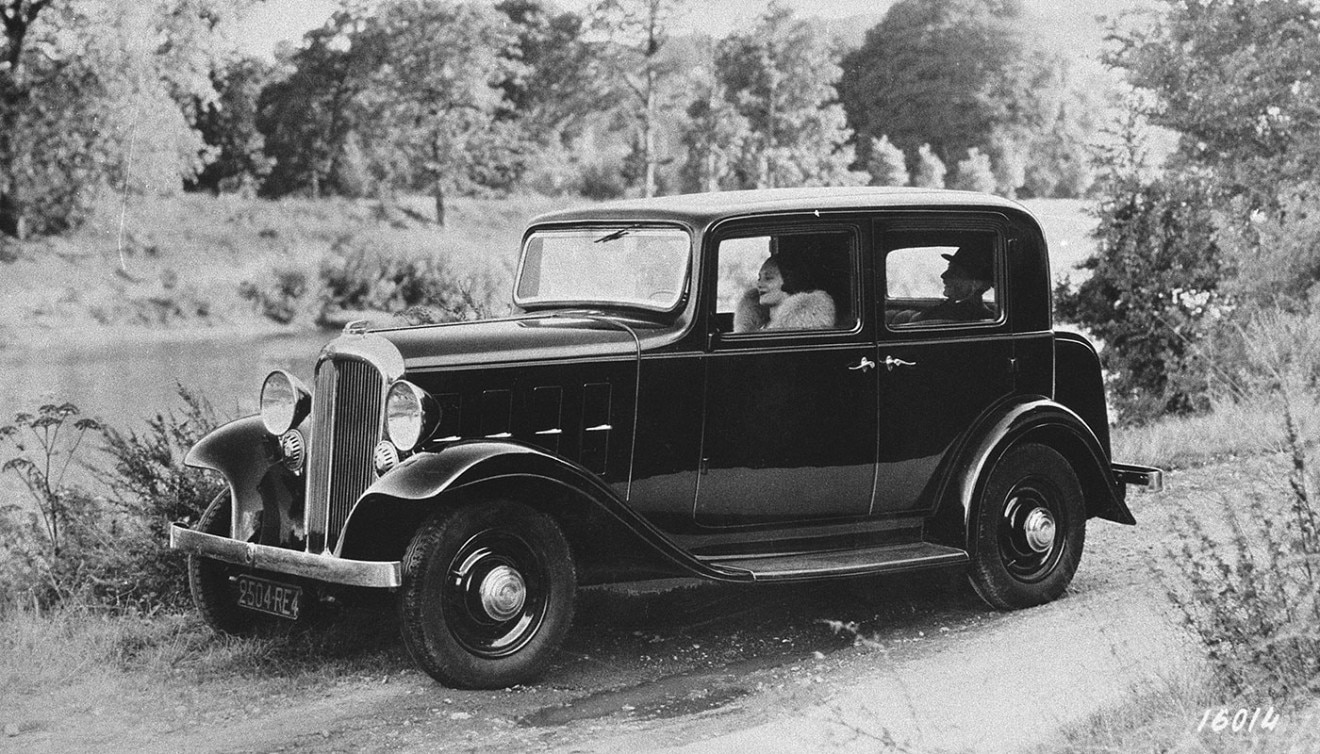
TYPE A
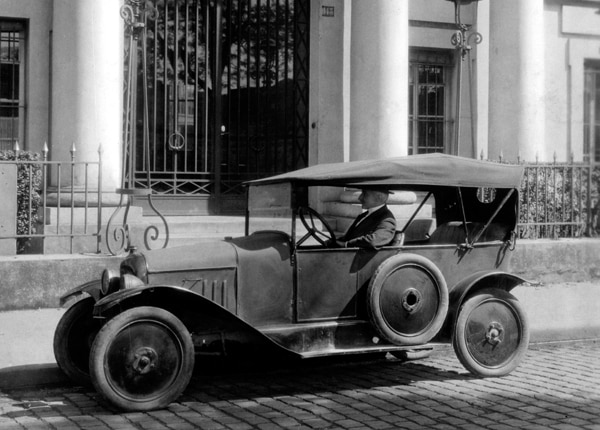 The 10HP (or Type A) was passed by France’s vehicle approval department on 20 November 1918. Production started at the end of May 1919 and the Type A arrived on the market on 7 July.
The 10HP (or Type A) was passed by France’s vehicle approval department on 20 November 1918. Production started at the end of May 1919 and the Type A arrived on the market on 7 July.
It was Citroën’s first vehicle and the first vehicle in Europe to be mass produced, using the principles developed by Henry Ford and implemented at his Detroit plant for more than ten years.
Equipped with a 1,327 cm3 four-cylinder engine with real output of 18 bhp at 2,100 rpm, the Type A had a top speed of more than 65 kph. It was an innovative car in more than one way. For the first time, customers were able to buy a complete car, fully equipped and with all bodywork.
The Type A remained in production until June 1921, and was available in a choice of ten versions.
B SERIES
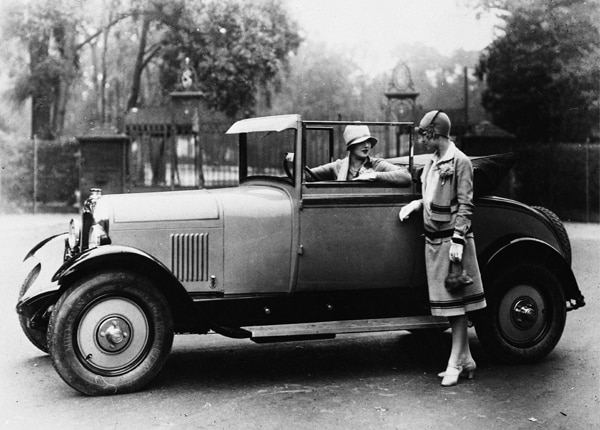 The Type A was replaced by the B2, a vehicle with a more powerful engine and a better cooling system. Its robust strength quickly made it a market success. In 1924, it was available in 12 versions, plus another three models, named B10, equipped with the new all-steel bodywork.
The Type A was replaced by the B2, a vehicle with a more powerful engine and a better cooling system. Its robust strength quickly made it a market success. In 1924, it was available in 12 versions, plus another three models, named B10, equipped with the new all-steel bodywork.
The B12 arrived in 1925. Available in six all-steel versions and five “wood and metal” versions, it replaced the B2 and B10, which disappeared completely the following year with the launch of the B14. In 1928, during its last year of production, the B14 gained a commercial version (the B15) and a limited edition version with an enlarged track for the colonies (B18).
At the same time, between 1922 and1926, Citroën marketed the compact 5HP. The most widely known version of this vehicle is the Trèfle.
C SERIES
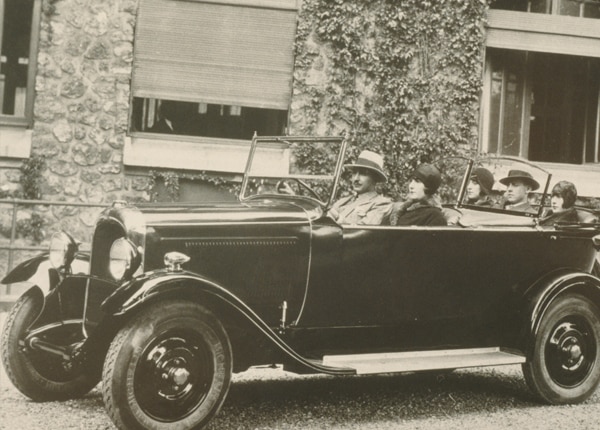 The new Citroën range was unveiled at the Paris Motor Show in October 1928. This was an important date in the history of the brand since Citroën was presenting not only the new C4 (replacing the B14), but also a new luxury model equipped with a six-cylinder engine: the C6.
The new Citroën range was unveiled at the Paris Motor Show in October 1928. This was an important date in the history of the brand since Citroën was presenting not only the new C4 (replacing the B14), but also a new luxury model equipped with a six-cylinder engine: the C6.
Featuring all the innovations of their predecessor, including the all-steel bodywork, these two models enjoyed a successful career up to 1932. In 1931,the range included no fewer than 47 different versions.
On 1 April 1932, the C4 and C6 gained a floating-power engine: a revolution in automotive comfort. The C4 gained an enduring reputation for strength, and was still a frequent sight on the road in the 1950s.
ROSALIE
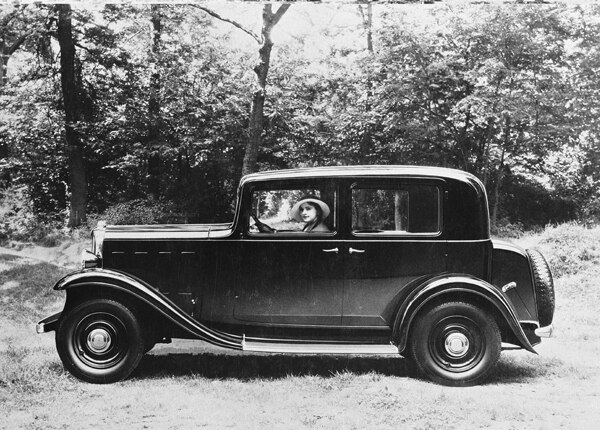 At the 1932 Paris Motor Show, Citroën presented the 8CV, 10CV and 15CV. The first two replaced the C4, while the third, with its six-cylinder engine, was the natural replacement for the C6.
At the 1932 Paris Motor Show, Citroën presented the 8CV, 10CV and 15CV. The first two replaced the C4, while the third, with its six-cylinder engine, was the natural replacement for the C6.
From 1931, following a string of new speed records set by these cars at the Linas-Montlhéry speed ring, all three vehicles quickly gained the nickname of Rosalie, after the 8CV Rosalie.
In January 1934, Citroën upgraded the vehicles with a new type of bodywork called Nouvel Habillage or new trim. The following May, the vehicles gained torsion bar suspension with independent wheels at the front.
With the launch of the Traction Avant in 1934, the Rosalie vehicles took a back seat. They nevertheless continued their career, equipped with the engines of the 7CV and 11CV, until September 1938, under the names 7UA and 11UA.
TRACTION AVANT
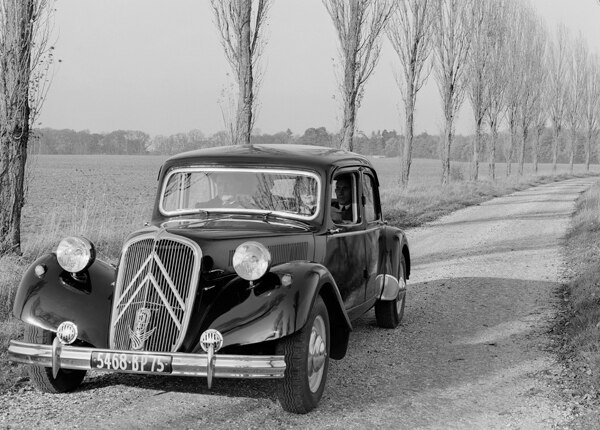 When the first Traction Avant (the 7CV) made its debut in May 1934, it started a revolution in the automotive world. Never before had a production vehicle boasted so many innovations, e.g.: an all-steel chassisless unitised body, hydraulic brakes on all four wheels, independent wheel suspension with a torsion bar, a floating-power engine with overhead valves, and removable cylinder sleeves.
When the first Traction Avant (the 7CV) made its debut in May 1934, it started a revolution in the automotive world. Never before had a production vehicle boasted so many innovations, e.g.: an all-steel chassisless unitised body, hydraulic brakes on all four wheels, independent wheel suspension with a torsion bar, a floating-power engine with overhead valves, and removable cylinder sleeves.
Although production of the 7CV stopped in June 1941, the 11CV (launched in September 1934) continued to be built until July 1957. And the 15CV version, equipped with a six-cylinder engine, was produced from June 1938 to July 1956.
In April 1954, Citroën launched a special version called the 15H. Its hydropneumatic rear suspension heralded that of the future DS.
2CV AND DERIVED VEHICLES
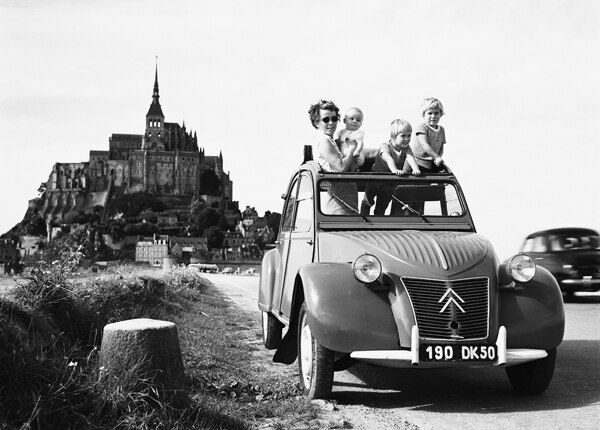 The 2CV originally dates back to a study by Michelin in the early 1920s on the development of a “people’s car”. Design studies began in 1936 but the presentation and launch of the first model, scheduled for October 1939, were cancelled owing to the outbreak of war.
The 2CV originally dates back to a study by Michelin in the early 1920s on the development of a “people’s car”. Design studies began in 1936 but the presentation and launch of the first model, scheduled for October 1939, were cancelled owing to the outbreak of war.
Following a number of design changes, the 2CV was finally officially presented at the 1948 Paris Motor Show. Production at the Levallois plant started only the following year, but it was to continue for 42 years, ending on 27 July 1990 at the Mangualde plant in Portugal!
During its long career, the “Duck” inspired a number of derived models including the Dyane in September 1967 and the Méhari, with its original ABS plastic bodywork, presented in May 1968.
DS
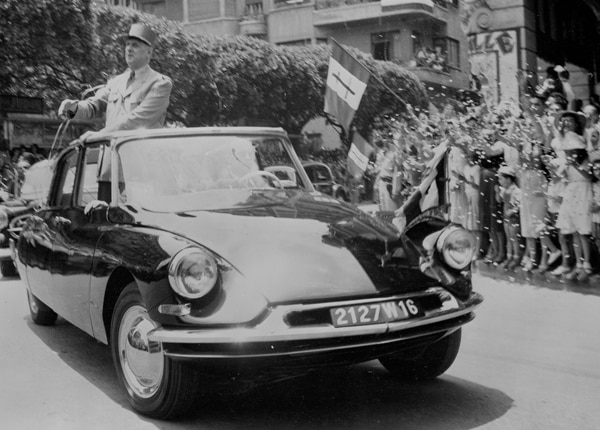 The DS created a revolution in technology and design. Unveiled at the 1955 Paris Motor Show, it was a car straight out of science fiction. With its original design, avant-garde interior layout, hydropneumatic suspension and fully hydraulic steering, it caused a major stir. Almost 80,000 orders were taken during the show.
The DS created a revolution in technology and design. Unveiled at the 1955 Paris Motor Show, it was a car straight out of science fiction. With its original design, avant-garde interior layout, hydropneumatic suspension and fully hydraulic steering, it caused a major stir. Almost 80,000 orders were taken during the show.
The front end was restyled in September 1967. It gained four headlights mounted behind faired-in panels, with the inner pair swivelling with the steering. With the launch of the ID (presented in October 1956), the vehicle gained a choice of saloon body styles, as well as estate and cabriolet versions.
Production of the DS stopped on 24 April 1975. Today, the DS continues to symbolise avant-garde automotive design.
AMI
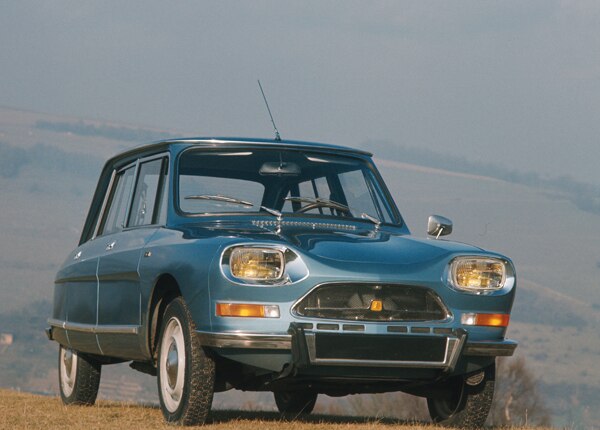 Launched in 1961, the Ami 6 was an intermediate model fitted with a 3CV engine. Skilfully combining features from the 2CV and the DS, the Ami 6 also sported original design lines with its reverse raked rear window. An estate version arrived in August 1964.
Launched in 1961, the Ami 6 was an intermediate model fitted with a 3CV engine. Skilfully combining features from the 2CV and the DS, the Ami 6 also sported original design lines with its reverse raked rear window. An estate version arrived in August 1964.
In 1969, the Ami 6 was replaced by the Ami 8, which had a more conventional rear window for the saloon version. This new model was the basis for the astonishing M35 prototype (500 examples) equipped with a rotary piston engine (heralding that of the GS Birotor) and DS-type hydropneumatic suspension.
In January 1973, the Ami 8 produced the Ami Super, equipped with the 1,015 cm3 four-cylinder engine of the GS. The Ami Super ended its career in July 1976 and the Ami 8 two years later.
SM
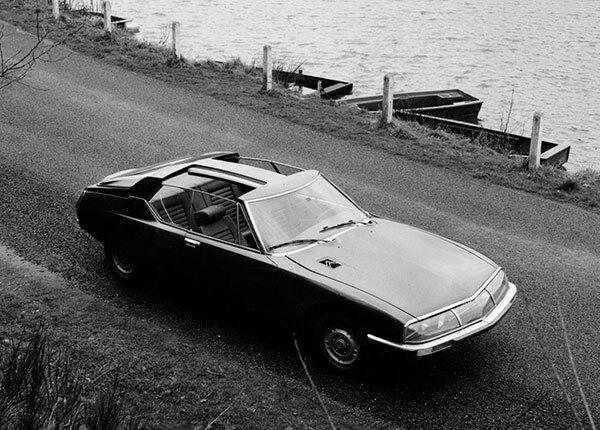 With the SM, Citroën endowed its range with a flagship of superb design. This luxury limousine, equipped with a V6 Maserati engine, reaped all the benefits of the expertise acquired through the DS in front wheel-drive technology, as well as in hydraulics and suspension. It featured a five-speed gearbox and DIRAVI/VariPower steering (hydraulic power steering with power-assisted return).
With the SM, Citroën endowed its range with a flagship of superb design. This luxury limousine, equipped with a V6 Maserati engine, reaped all the benefits of the expertise acquired through the DS in front wheel-drive technology, as well as in hydraulics and suspension. It featured a five-speed gearbox and DIRAVI/VariPower steering (hydraulic power steering with power-assisted return).
Launched in March 1970, the SM won unanimous acclaim for its original, innovative design. Its exceptional dynamic qualities attracted connoisseurs in France, Europe and also the US. However the SM ended its career in July 1975, a victim of rising fuel costs and motorway speed limits.
GS
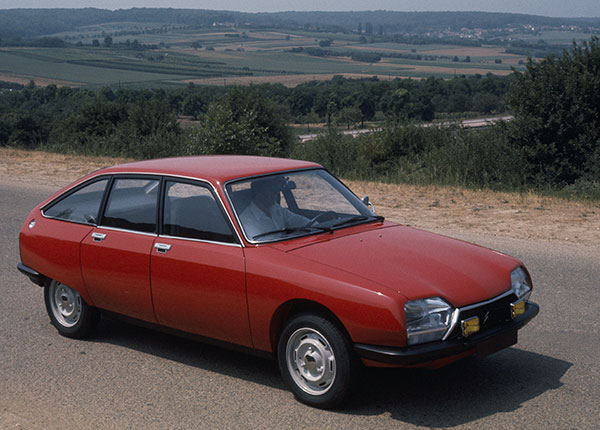 The GS embodied the best of Citroën’s expertise applied to a production vehicle. It was a front-wheel drive, with a flat four-cylinder air cooled engine, hydropneumatic suspension, and also bodywork that firmly established it as the world’s most aerodynamic production car.
The GS embodied the best of Citroën’s expertise applied to a production vehicle. It was a front-wheel drive, with a flat four-cylinder air cooled engine, hydropneumatic suspension, and also bodywork that firmly established it as the world’s most aerodynamic production car.
Launched in July 1970, the GS was positioned between the Ami 8 and the DS. An estate version became available one year later. In September 1979, the GS became the GSA and continued to pursue a successful market career until July 1986.
September 1973 saw the launch of the GS Birotor equipped with a twin-rotor engine. For the same reasons as the SM, the GS Birotor saw its market career come to a premature end in October 1975.
CX
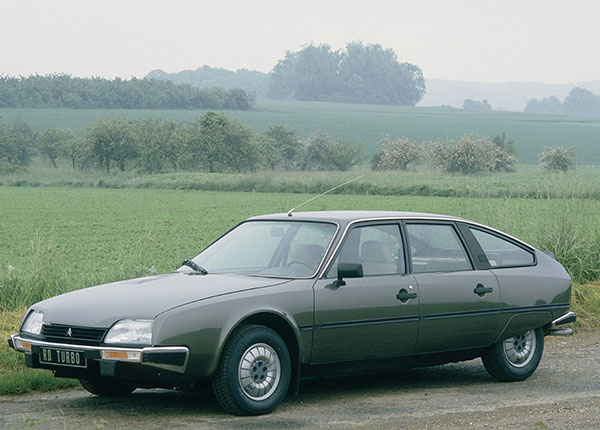 Launched in October 1974, the CX was a fitting successor to the DS. Its original design and innovative interior styling made it part of the traditionof great Citroën vehicles. Its hydropneumatic suspension delivered exceptional ride and comfort.
Launched in October 1974, the CX was a fitting successor to the DS. Its original design and innovative interior styling made it part of the traditionof great Citroën vehicles. Its hydropneumatic suspension delivered exceptional ride and comfort.
In September 1975, the CX became the first Citroën production vehicle to be fitted with a diesel engine. In September 1984, it became France’s fastest road car with the CX GTI Turbo and its top speed of 220 kph.
Restyled in July 1985, the CX ended its career in July 1991. It is remembered today as a car of superlative quality.
LN
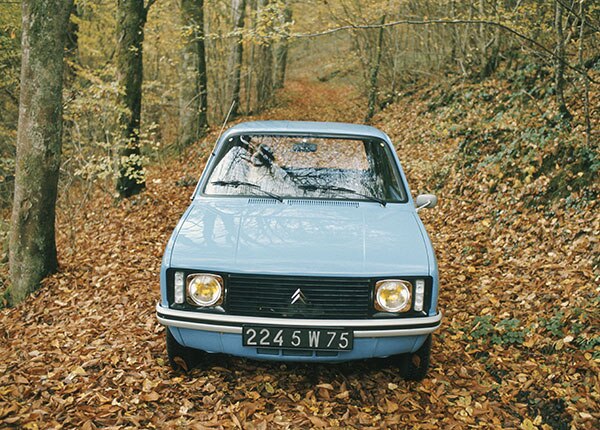 The LN, launched in October 1976, was the result of agreements signed two years earlier by Peugeot and Citroën on the founding of the PSA Group. The body of the new model was based on the Peugeot 104, while the two-cylinder air-cooled engine was similar to that of the Ami 8.
The LN, launched in October 1976, was the result of agreements signed two years earlier by Peugeot and Citroën on the founding of the PSA Group. The body of the new model was based on the Peugeot 104, while the two-cylinder air-cooled engine was similar to that of the Ami 8.
In September 1978, the LN gained a more powerful engine (upgraded to 652 cm3 from 602 cm3) and became the LNA. Four years later, the range was expanded to include a model with a 1,124 cm3 four-cylinder water-cooled engine.
Appreciated both in the city and the countryside, this compact car was particularly popular with female customers. It was removed from the catalogue in September 1986.
VISA
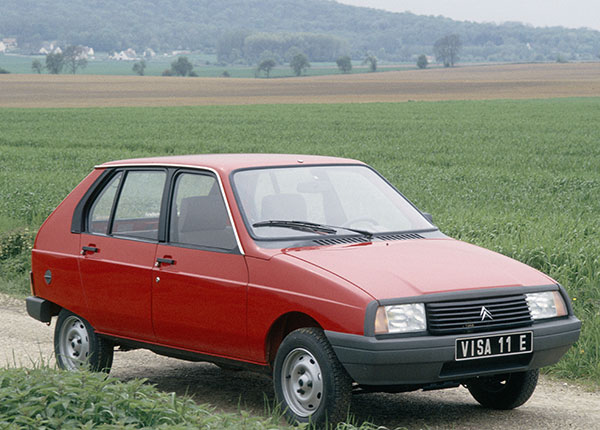 The Visa was presented at the 1978 Paris Motor Show. Based on the four-door Peugeot 104, it shipped with a choice of two engines: a 652 cm3 longitudinal two-cylinder air-cooled unit or a 1,124 cm3 transverse four-cylinder water-cooled unit.
The Visa was presented at the 1978 Paris Motor Show. Based on the four-door Peugeot 104, it shipped with a choice of two engines: a 652 cm3 longitudinal two-cylinder air-cooled unit or a 1,124 cm3 transverse four-cylinder water-cooled unit.
The Visa combined original design lines with an interior layout that was pure Citroën, focusing on ergonomics and driver comfort. With several body styles launched over the years, the Visa was both an open-top and a road car, economical and sporty.
A restyling in March 1981 made the Visa even more attractive. Three years later, it gained a 1,769 cm3 diesel engine. The Visa made a discreet exit from the Citroën catalogue in July 1988.
1980s
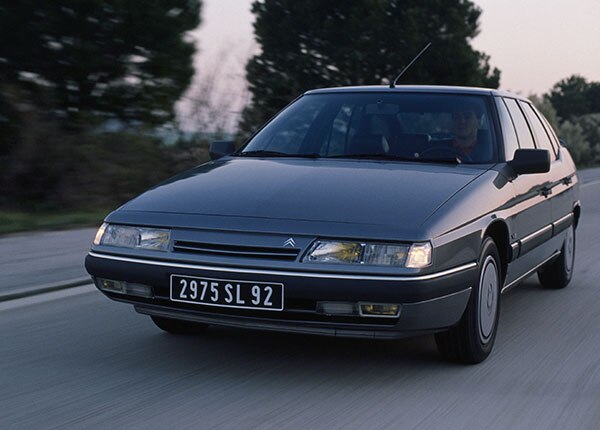 For Citroën, the 1980s was partly a decade of tradition, with the 2CV and CX, but also a decade of renewed vitality, illustrated by the new models that heralded a new era of prosperity for the brand.
For Citroën, the 1980s was partly a decade of tradition, with the 2CV and CX, but also a decade of renewed vitality, illustrated by the new models that heralded a new era of prosperity for the brand.
October 1982, for example, saw the launch of the BX, a car designed by Italy’s renowned Bertone. Four years later in 1986, the compact AX made its debut, in three- and five-door versions.
The end of the decade was marked by the XM, a new executive model launched in May 1989. Depending on the model, it was equipped with Hydractive hydropneumatic suspension and a V6 engine in a subtle blend of innovation and tradition.
1990s
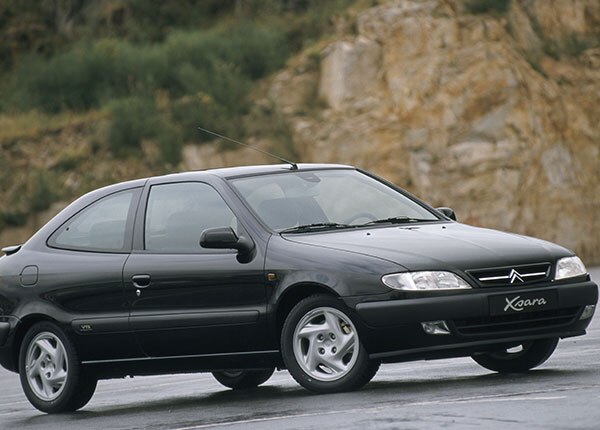 In the 1990s, Citroën made the transformation that would take it fully into the 21st century. After the 2CV took its final bow on 27 July 1990, Citroën continued to renew and expand the range,with increased drive and vitality.
In the 1990s, Citroën made the transformation that would take it fully into the 21st century. After the 2CV took its final bow on 27 July 1990, Citroën continued to renew and expand the range,with increased drive and vitality.
The first car of the decade was the ZX in March1991. It was followed two years later by the elegant Xantia and then, in 1994, by the Evasion/Synergie MPV.
The year 1996 saw the arrival of the Berlingo Multispace and Saxo, while the Xsara made its debut in 1997. As well as notching up a string of victories in the World Rally Championship, the Xsara also produced the Xsara Picasso, an innovative compact MPV, in 1999.